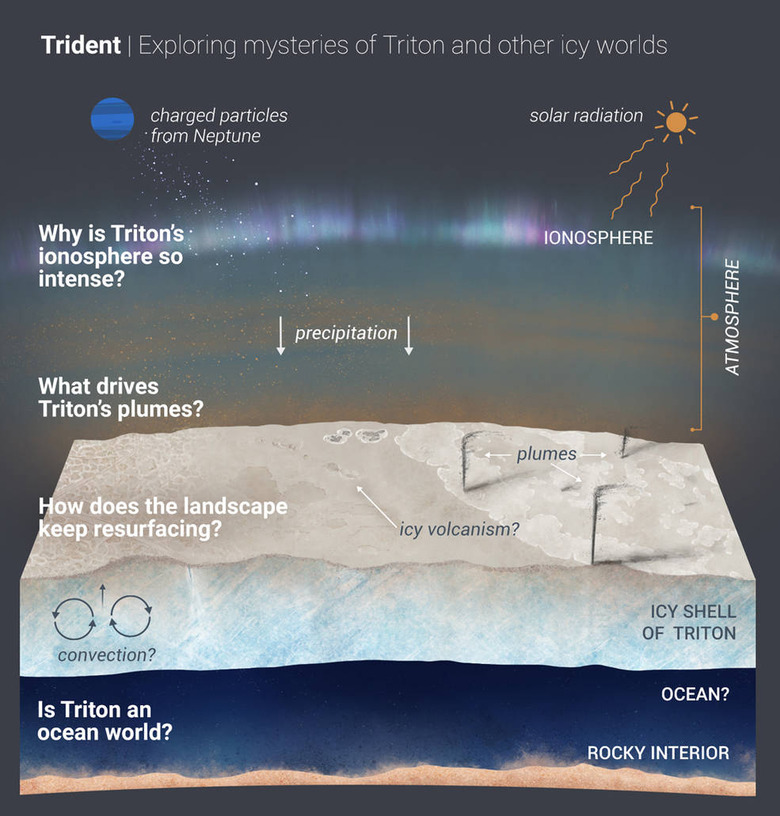NASA Proposes A Mission To Visit Neptune's Moon Triton
About 30 years ago, NASA's Voyager 2 spacecraft flew by Neptune's moon Triton. The images the spacecraft sent back were incredible and have left researchers wanting more information ever since. Triton was revealed to have dark plumes of icy material spraying from its surface. Triton also had a very young looking surface that had been resurfaced over and over with fresh material.
The big question on the minds of researchers have been what material is resurfacing the surface of Triton and where does it come from. Scientists also wanted to know what powers the activity seen on the surface of the moon. NASA has a new mission that is part of a competition for the NASA Discovery Program that wants to answer the mysteries about Triton.

The mission is called Trident and is one of four developing concept studies for new missions. NASA intends to select up to two of them by the summer of 2021 to become a full-fledged mission to launch later in the decade. Triton has many mysteries that scientists want to solve; one of the main is why Triton orbits in the opposite direction of Neptune. Something no other large moon in the solar system does. Triton also has an orbit that lies in an extreme tilt, offset by Neptune's equator by 23-degrees.
Scientists also believe that Triton didn't start in orbit around Neptune scientists believe it migrated there form the Kuiper Belt. The moon also has a unique atmosphere filled with charged particles called an ionosphere. It has an ionosphere that is ten times more active than any other moon in the solar system.
Making the fact that Triton has an ionosphere even more interesting is that such a feature is generally charged by solar energy. Still, Triton and Neptune are so far from the Sun that other energy sources are though to be at work. Trident would have a full-frame imaging camera, among other scientific instruments. The challenge for Trident is if the emission can get to Triton by 2040, it can perform tests of what's powering the plume activity. If it misses that goal, the Sun would be too far North for another 100 years for tests to be conducted.
